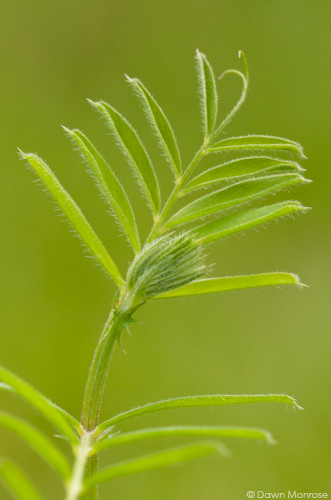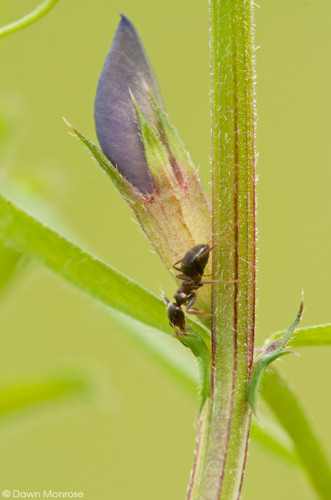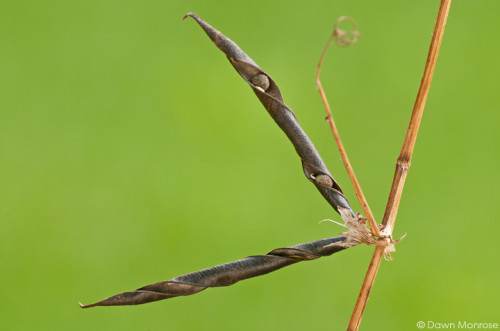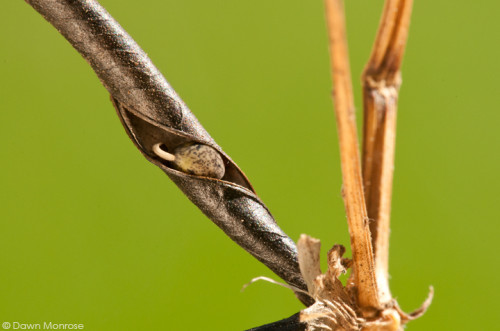Where are they?
I was hoping for a Summer full of Turtle doves, but sightings have been few and far between. They are in real trouble, last years wet Summer meant a disastrous breeding season for them, and numbers are very low this year. Conservationists are concerned that this year could see the lowest numbers of Turtle doves ever. Read more HERE.
So is this the beginning of the end for this bird in the UK? Well, hopefully not. This years hot, sunny Summer couldn’t be more different than last year, so with any luck they’ll have more success raising their young. But this is a bird on the brink, and we need to take action now to help it.
My Turtle dove border is looking, well, weedy, but that’s how it should be. The warm weather has encouraged the plants to go to seed, and that’s exactly what the birds want. The Common Vetch has been a fascinating plant, in May the foliage unfurled like miniature palm leaves.
The flowers proved attractive to ants as well as bees.
Now, the plants have produced long black seedpods, which slowly twist open revealing the fresh, speckled seed inside.
If you want to help save this iconic farmland bird there are things you can do. If you own a garden in a rural area, then why not set aside a patch for a wildflower meadow, being sure to include seed rich plants like vetch, red and white clover and the Turtle dove’s favourite – Fumitory. For more information on what we can do in our gardens and farmland, you can download an advisory sheet HERE. There are plenty of other ways to help too, you can donate to the project, or buy Nature Friendly Products by following these links.
(Click images to view larger…)
If you like what you see, please consider sharing![social_share/]






I was reading somewhere over the weekend that Norfolk is now considered the last stronghold of the Turtle Dove in the UK. Let’s hope it improves.